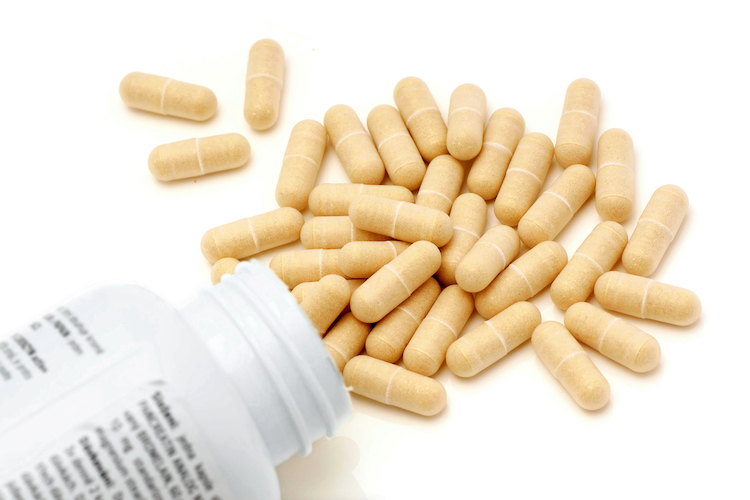The Benefits Of Vitamin E + Dosage Recommendations
Are you interested in optimizing your health? If you’re like most people, that answer is a resounding yes, but the methods to achieving wellness are vast, to say the least. Although there’s no one-size-fits-all answer, ensuring that your vitamin E intake is on-point is just one of many variables that could lead to desirable results.
Vitamin E can naturally slow the aging process, prevent free radical damage and heart disease, and improve neurological function. It’s found in plant foods, such as fruits, grains, wheat germ, nuts, and certain oils, and it’s also available in supplement form. Here’s what research has revealed about this important vitamin, and its impact on your longevity…

Vitamin E Benefits
Increased Muscle Strength And Physical Endurance
Vitamin E reduces the levels of oxidative stress on your muscles after exercise, which can lessen pain and boost endurance. It can also increase your energy by promoting blood circulation and nourishing cell walls through strengthened capillaries.
Prevents Disease By Fighting Free Radicals
Free radicals can lead to cancer and heart disease by breaking down the healthy cells in your body. Vitamin E has components that can boost immune function and fight free radical formation and damage. It can also reduce inflammation, which contributes to cell aging and premature death when left unchecked.
Thicker Hair
Along the same lines of slowing cell damage and aging, vitamin E can likewise help decrease environmental damage to hair and promote circulation to the scalp. Vitamin E oil can be used on skin and hair to help retain moisture and alleviate dryness.
Repairs Skin Damage
Because of its positive effect on cell walls and cell regeneration, vitamin E is an excellent, natural anti-aging nutrient to use on your entire body. This is especially important if you’re often exposed to UV light or cigarette smoke. Some studies show that vitamin E therapy can even improve the appearance of eczema, acne, and scars.
Improves Cholesterol
In its normal state, cholesterol is not a bad thing. It becomes a problem when it oxidizes, which leads to hardened arteries. Since Vitamin E is an antioxidant and free-radical fighter, establishing regular intake can help prevent bad cholesterol from getting the best of you.
Hormonal Balancing And Decreased PMS Symptoms
Vitamin E supplementation helps to naturally balance the nervous and endocrine systems, which lessens PMS symptoms and promotes a regular menstrual cycle. In addition, it can help you maintain a healthy weight and improve your energy.
Proper Fetal Development
Vitamin E intake during pregnancy is key for proper development of the baby. By controlling inflammation and protecting important fatty acids, Vitamin E helps optimize the development of the nervous system when taken during pregnancy and while nursing.
Improved Vision
Some studies show that the risk of age-related macular degeneration can be decreased by vitamin E supplementation. For this to be the case, vitamin E needs to be taken with in combination with the proper amounts of vitamin C, zinc, and beta-carotene. Daily high doses of vitamins E and A have also been noted to improve vision and healing in laser eye surgery patients.
Can Protect Against Alzheimer’s Disease
Because of its benefit to neurological function, increased vitamin E intake can help slow the onset of Alzheimer’s and other neurodegenerative disorders or slow the decline of those suffering from the disease. Vitamins E and C taken together have also been shown to reduce the risk of developing other forms of dementia.
Improve Medical Treatment And Lower Cancer Risk
Vitamin E’s powerful antioxidant and free radical fighting abilities have been shown to reduce unwanted side effects from chemotherapy and other drug treatments, as well as suppressing tumor and cancer cell growth.
Photo: Flickr.com/Marco Verch Professional Photographer and Speaker’s photostream
Summary
Forms Of Vitamin E
There are eight forms of vitamin E, but the most commonly studied is alpha-tocopherol. Research on the variations of this vitamin is ongoing because each isomer has distinctly different healing properties. Many benefits are being discovered with another other form of vitamin E, called tocotrienol, which research reveals may hold even more benefits than tocopherols.
This discovery has led to a push to revamp how vitamin E is labeled and described in studies. How does this impact consumers? Essentially, it’s best to get your vitamin E from a variety of sources to ensure a well-balanced intake of its different forms. The best option is always to consume naturally occurring vitamins as part of your healthy diet, instead of opting for synthetic, low-quality supplements.

Vitamin E Dosage
Daily intakes are measured in milligrams (mg) and international units (IU). The RDA includes the amount obtained from both food and supplement sources of vitamin E.
Children:
- 1–3 years: 6 mg/day (9 IU)
- 4–8 years: 7 mg/day (10.4 IU)
- 9–13 years: 11 mg/day (16.4 IU)
Males:
- 14 years and up: 15 mg/day (22.4 IU)
Females:
- 14 years and up: 15 mg/day (22.4 IU)
- Pregnant: 15 mg/day (22.4 IU)
- Breastfeeding: 19 mg/day (28.5 IU)
Because it’s fat soluble, vitamin E supplements are most effective when they’re taken and absorbed with food. Again, keep in mind that it’s ideal to get vitamin E directly from whole, unprocessed foods.

Vitamin E-containing Foods
The USDA recommended daily allowance (RDA) for “collective” vitamin E is 15 mg/day (22.5 IU) for adults. Try consuming 2-3 of these foods daily in order to meet your vitamin E needs:
- Avocado: one entire raw – 2.65 mg (18%)
- Mango: one entire raw – 3.02 mg (20%)
- Wheat germ: 1 cup plain, uncooked – 18 mg (120%)
- Hazelnuts: 1 cup – 20.29 mg (133%)
- Almonds: 1 cup – 32.98 mg (218%)
- Sunflower seeds: 1 cup – 33.41 mg (220%)
- Kiwi: 1 medium – 1.1 mg (6%)
- Tomato: 1 raw – 0.7 mg (4%)
- Broccoli: 1 cup cooked – 20.4 mg (12 %)
- Butternut squash: 1 cup cooked, cubed – 2.64 mg (17%)
- Spinach: ½ cup cooked or 2 cups uncooked – 1.9 mg (10%)

Side Effects Of Vitamin E
While side effects are rare, there have been some recorded with higher doses of vitamin E. For patients with diabetes or heart disease, it’s recommended to limit intake to 400 IU/day or less. One serious side effect of taking too much vitamin E is increased bleeding, especially in the brain. Some studies indicate that a daily intake between 300-800 IU may increase the risk of hemorrhagic stroke by 22% in some patients.
Due to its propensity to slow down blood clotting or increase bleeding, patients who are already on medications for blood thinning, such as Warfarin (Coumadin), aspirin, ibuprofen, and clopidogrel should always consult a physician before beginning vitamin E supplementation.
Some cholesterol-lowering medications may also interact negatively with vitamin E. While it’s unclear if taking vitamin E alone diminishes the effectiveness of some of these drugs, taking vitamin E in conjunction with vitamin C and beta-carotene does have that effect.

Symptoms Of Vitamin E Deficiency
While uncommon, vitamin E deficiencies can occur in some scenarios. Premature babies born at less than 3.5 pounds are in danger of deficiency, for example. Additionally, since fat is required to absorb vitamin E, people with fat absorption problems are also at risk of being deficient. This usually occurs in patients who have inflammatory bowel disease. Other individuals who may suffer from or develop a deficiency are those with Crohn’s disease and other malabsorption issues, cystic fibrosis, gastric bypass surgery, liver disease, or pancreatic insufficiency.
TL;DR Summary
- Vitamin E comes in 8 different forms (called isomers), which fit into two categories, tocopherols and tocotrienols. These provide different benefits. It’s best to get a well-rounded variety of vitamin E through whole food sources.
- Vitamin E is a fat-soluble vitamin that acts as a strong antioxidant and is imperative in the proper functioning of your organs, endocrine system, and nervous system.
- It’s found only in plant sources: grains, fruits, wheat germ, nuts, and oils.
- It’s vital for proper growth and development of fetuses and babies.
- Deficiency is rare but can include impaired vision and speech or loss of muscle coordination.
- Vitamin E can be unsafe in exceedingly high doses, especially for patients with underlying health issues, such as diabetes or heart disease.
